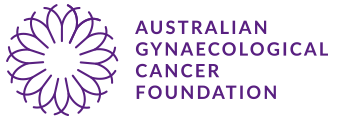Cervical Cancer Awareness Week, 10 – 16 November 2024
Cervical Cancer Awareness week each year is an opportunity to focus on a disease which is preventable yet causes terrible suffering and death for women, particularly in low and middle income countries, world-wide.
Globally, cervical cancer is the fourth most common cancer in women. In 2022, an estimated 604,000 women were diagnosed with the disease and over 342,000 died from it. About 94% of these deaths occurred in low- and middle-income countries, equating to a survival rate of about 43%.
By contrast, cervical cancer is only the 13th most common cancer in women in Australia, with 851 new cases diagnosed in 2021, the majority of whom have never been screened or are overdue for screening. The 5-year survival rate for cervical cancer in Australia is 74%. Indigenous women in Australia are 2 times as likely to develop cervical cancer and about 4 times as likely to die from the disease compared to non-indigenous Australian women.
Why such as big difference between various countries around the world, and even different ethnic groups within the same country? The difference lies in rates of cervical screening. Cervical cancer begins as a pre-cancer called cervical intraepithelial neoplasia 3 (CIN 3). It is believed that CIN 3 lasts for about 10 years before progressing to advanced cancer, which can spread to other sites and kill the patient. CIN 3 is easily diagnosed by cervical screening and is readily cured by diathermy or other means of destroying the lining of the cervix.
Cervical screening first became available in the 1960s in Australia, with use of the Pap smear, which was named after the Greek physician George Papanicolaou. Since the mid-1980s, it has become clear that almost all cases of cervical cancer are caused by various strains of the human papilloma virus (HPV). Over the past 5-6 years, primary HPV testing, in which a swab is taken from the cervix and tested for the presence of the HPV virus, has replaced the Pap smear as the screening method of choice. This test is more accurate than the Pap smear, and screening is now recommended every 5 years between the ages of 25 and 65 years. Self-testing for HPV is now available, and this has been well received, particularly by indigenous women who have had lower screening rates, particularly those living in remote areas.
A vaccine against the human papilloma virus was developed by Professors Ian Frazer and the late Jian Zhou at the University of Queensland in 2006. Australia became the first country in the world to introduce free vaccination for schoolgirls 12 to 13 years of age under its National Immunisation Program in 2007. The program was extended to include schoolboys in 2013 and is available for women up to the age of 25 years. The current vaccine will eliminate 90% of cases of cervical cancer, so screening remains important. Among young people turning 15 in 2020, 80.5% of girls and 77.6% of boys were fully immunised against HPV.
Clinically, cervical cancer occurs mainly in premenopausal women, who usually have children to care for. Typically, it presents with bleeding after sexual intercourse (post-coital bleeding), but if left undiagnosed, it will erode into the bladder or bowel, and the patient will present with the leakage of urine or faeces from the vagina. Unfortunately, this is a common mode of presentation in low- and middle-income countries. If diagnosed while still confined to the cervix, it can be treated surgically (by radical hysterectomy and removal of pelvic lymph nodes) but once it has spread beyond the cervix, it must be treated by radiation therapy.
I am pleased that the early indications from the Cancer Institute of NSW are that the self-collection HPV test is increasing the number of women being screened for cervical cancer in Australia, including in rural and remote regions, because this will further decrease the incidence and mortality of the disease.
I am also pleased that there is growing interest from developing countries, with widespread support from many governments, public health and non-government agencies, and the International Gynecological Cancer Society, to promote and provide HPV vaccinations and screening to support the reduction of cervical cancer and its impact on women world-wide.
Prof Neville Hacker AM MD, Founder & Director, AGCF, October 2024
Click here for more information on cervical cancer self-screening in Australia, by Assoc Prof Michael Campion; and on cervical cancer research results by Cancer Council Australia.

Lisa’s Survival From Cervical Cancer
My initial diagnosis of cervical cancer came almost too late. I undertook a routine pap smear in 1996 in my then home in New Zealand. When the results came back showing abnormal cells, this wasn’t followed up as it should have been by the specialist I saw.
Were it not for my persistence in seeking another pap smear and a second opinion, my life would have most certainly ended there. As it was, the abnormal cells were high-grade precancerous cells (CIN3) and a tumour had developed in my cervix. When I was diagnosed with the cervical cancer, I knew nothing about it. I didn’t even know what or where my cervix was. This was a crucial lesson for me, and I hope for other women – if you are still not happy with how you are feeling – keep hunting, keep searching. CONSTANTLY ask questions.
Surgery to remove the tumour was done via a radical hysterectomy. Though I was not married at the time, my sudden inability to have children left me shattered. Being told I couldn’t have kids felt like the walls were crushing me. The only saving grace was that I got to keep my ovaries.
I was determined to have children by other means. Together with my husband John (who had proposed when he found out I had cancer and we married in October 1998), we decided to explore surrogacy as an option now that the cervical cancer was behind us. Tragically for us, in 1998 the cancer had come back. What was shocking about it was the way it had come back. I had undergone a laparoscopy years earlier to investigate pelvic pain. It was this procedure that had transferred a cancerous cell from my cervix to my stomach muscle. It was extremely rare I was told. I was immediately operated on to remove the tumour and was set on a path of intense radiotherapy and chemotherapy. I was told that my chance of survival was 50%. The treatment sent me into early menopause, and although my ovaries were still there and nicely tucked away under my rib cage (the gynaecological oncologist moved them to the rib cage to protect them from the radiotherapy), they were no longer working.
John and I attempted surrogacy with my sister and a friend (using my sister’s eggs and friend’s womb). We tried five times but each attempt was unsuccessful. It was two years of trying to have a family.
Three years after going into early menopause, the most extraordinary thing happened to me. In a medical first, my ovaries, like a rusty old lawnmower, started to work again. Miraculously, I was ovulating. The condition of my eggs was not the best (not surprising given the amount of battering my body had received) but those ovaries were releasing eggs. It was surreal, but it meant another chance at the family we desperately wanted. Via a surrogacy arrangement in the USA, we were able to find a surrogate for our embryos (which were fertilised in Australia). The second attempt resulted in the pregnancy of identical twin boys – Joshua Francis and Lucas Kristopher.
Today my family is settled into an ordinary yet crazy life that comes with having kids in school. Some days I feel invincible, while on others I feel vulnerable. I’ve never lost what I call the ‘cancer hangover’. I worry constantly about dying young.
While it is a bad luck story, it is a story of hope, especially for women who are unable to have children as a result of cancer treatments. There are other avenues, the dream of being a mum is not over. Explore your options.
My advice to women is to avoid suffering the consequences of not looking after yourself (and I don’t mean appearances). We worry too much about the exterior and don’t bother with the rest. Get a routine pap smear, get a second opinion if you’re still not feeling right, be persistent and be aware. Another piece of advice is to not forget to nurture your partners and husbands as they are suffering alongside you if you are unwell or so unfortunate to be diagnosed with cancer.
The AGCF website provides vital information about the actual cancer, the relevant anatomy, prevention (ie, getting pap smears), early detection, treatment, clinical trials and the crucial research being done in this space. I really wish that this information had been so readily available when I was going through my experience with cervical cancer.
Natasha tells her story of surviving cervical cancer
In 2018, the AGCF awarded Dr Aime Powell the Cindy Sullivan Fellowship to begin her outstanding research project, titled Aboriginal women at increased risk of cervical cancer incidence and mortality: Quantifying the risk in an era with national prevention programs.
This project investigates why Aboriginal women continue to experience inequitable and poorer health outcomes in the prevention of cervical cancer, despite having access to the National HPV Vaccination Program and the National Cervical Screening Program.
As part of her project, Aime spoke to women about their survival stories. This is Natasha’s.
In 2013, Natasha was diagnosed with cervical cancer after visiting her GP. “It wasn’t so much worrying about myself,” said Natasha. “It was more so what it meant for my family and how it would affect them.”
For her treatment program, Natasha had 5 rounds of chemotherapy and 35 rounds of radiotherapy. That whole time in her life was a blur, and she had never felt so tired. All she could think about was her kids. But going through that experience, Natasha learned the hard way to look after herself.
With 4 out of 5 women who develop cervical cancer in Australia never having had a screening or not screening regularly, it is the most important step for early detection.
Natasha knows that no woman wants to get a pap smear. She put hers off as long as possible. “Lots of times as a mother or a woman, you don’t put yourself first,” she says. “But I think going through that experience I learned the hard way that you need to… you can’t look after your family if you can’t look after yourself.”
Natasha tells other women to “just get it done”. The screening test saved her life.
Watch her video below.
Who we are
We are the Australian Gynaecological Cancer Foundation. The only organisation that focuses on funding laboratory research into all eight gynae cancers.
Subscribe to our newsletter
Get in touch
Where to find us:
1/1 Jamison Street, Sydney NSW 2001
For general enquiries:
telephone: +61 2 8235 2606
email: info@agcf.org.au
Together, we’re giving women hope.
Donations of $2 or more are tax deductable in Australia.
ABN: 17 152 685 295

© Australian Gynaecological Cancer Foundation | Privacy Policy

